Themed collection Journal of Materials Chemistry B Emerging Investigators

Journal of Materials Chemistry B profiles: Contributors to the Emerging Investigators 2019 Issue
Journal of Materials Chemistry B profiles contributors to the Emerging Investigators issue.
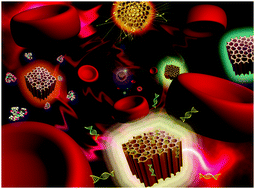
J. Mater. Chem. B, 2019,7, 6267-6270
https://doi.org/10.1039/C9TB90141H
Nucleic acids presenting polymer nanomaterials as vaccine adjuvants
Polymer nanomaterials in various shapes and sizes can be engineered to present nucleic acids and function as immune adjuvant.
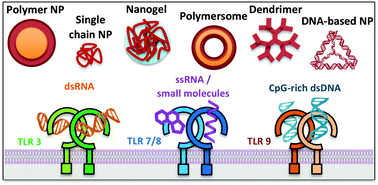
J. Mater. Chem. B, 2019,7, 6321-6346
https://doi.org/10.1039/C9TB01222B
Photoluminescent and biodegradable porous silicon nanoparticles for biomedical imaging
A set of unique properties including biodegradability, intrinsic photoluminescence, and mesoporous structure allows porous silicon nanoparticles to address current challenges of translational nanomedicine, especially in biomedical imaging.
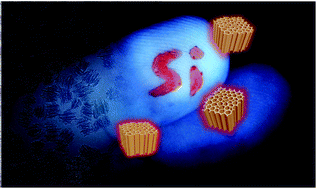
J. Mater. Chem. B, 2019,7, 6271-6292
https://doi.org/10.1039/C9TB01042D
Biomaterial–tight junction interaction and potential impacts
Biomaterial–tight junction (TJ) interactions: analyses of the TJ structure and natural modulation, interaction mechanism, potential impact and measuring methods.
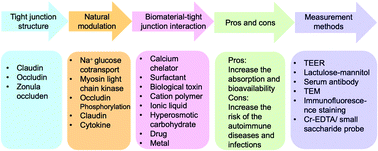
J. Mater. Chem. B, 2019,7, 6310-6320
https://doi.org/10.1039/C9TB01081E
Mechanochemical engineering of 2D materials for multiscale biointerfaces
Atomically thin nanomaterials that are wrinkled or crumpled represent a unique paradigm for interfacing with biological systems due to their mechanical flexibility, exceptional interfacial area, and ease of chemical functionalization.
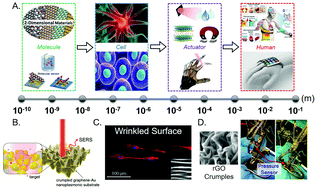
J. Mater. Chem. B, 2019,7, 6293-6309
https://doi.org/10.1039/C9TB01006H
Mechanistic understanding of monovalent cation transport in eumelanin pigments
Recent research advances in charge-conducting materials have enabled the transformation of the naturally-occurring materials into crucial components in many technologies, including renewable energy storage devices or bioelectronics.
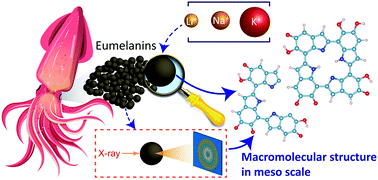
J. Mater. Chem. B, 2019,7, 6355-6361
https://doi.org/10.1039/C9TB01211G
Double network hydrogels based on semi-rigid polyelectrolyte physical networks
Double network hydrogels are formulated from polyacrylamide hydrogels containing semi-rigid polyelectrolytes through post-polymerization immersion in multi-valent ion solutions.
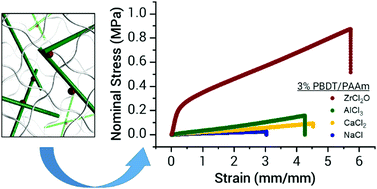
J. Mater. Chem. B, 2019,7, 6347-6354
https://doi.org/10.1039/C9TB01217F
Hydroxyapatite-binding micelles for the detection of vascular calcification in atherosclerosis
Hydroxyapatite-binding micelles show potential as vascular calcification diagnostic probes in atherosclerotic murine models and diseased human arteries ex vivo.
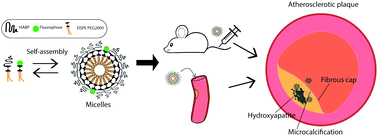
J. Mater. Chem. B, 2019,7, 6449-6457
https://doi.org/10.1039/C9TB01918A
Structural transitions and encapsulation selectivity of thermoresponsive polyelectrolyte complex micelles
Polyelectrolyte complex micelles containing thermoresponsive coronas can exhibit varying morphologies and encapsulate multivalently charged therapeutics for drug delivery applications.
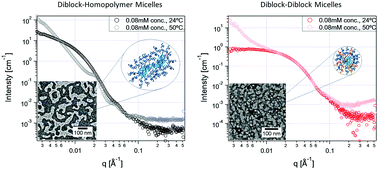
J. Mater. Chem. B, 2019,7, 6438-6448
https://doi.org/10.1039/C9TB01194C
Translocation of soft phytoglycogen nanoparticles through solid-state nanochannels
Phytoglycogen nanoparticles are soft, naturally-derived nanomaterials with a highly uniform size near 35 nm.

J. Mater. Chem. B, 2019,7, 6428-6437
https://doi.org/10.1039/C9TB01048C
Supramacromolecular injectable hydrogels by crystallization-driven self-assembly of carbohydrate-conjugated poly(2-isopropyloxazoline)s for biomedical applications
An approach for the fabrication of self-healing injectable hydrogels based on the crystallization-driven self-assembly of carbohydrate-conjugated poly(2-isopropyloxazoline)s is demonstrated.

J. Mater. Chem. B, 2019,7, 6362-6369
https://doi.org/10.1039/C9TB00918C
Switchable modulation of bacterial growth and biofilm formation based on supramolecular tripeptide amphiphiles
A minimalistic dual-responsive supramolecular tripeptide system was developed for switchable control of bacterial growth and biofilm formation.

J. Mater. Chem. B, 2019,7, 6420-6427
https://doi.org/10.1039/C9TB00973F
Computational studies of shape control of charged deformable nanocontainers
Simulations show electrostatic interactions drive novel shape transitions in deformable nanocontainers under different environmental solution conditions.

J. Mater. Chem. B, 2019,7, 6370-6382
https://doi.org/10.1039/C9TB01003C
Preventing fungal growth on heritage paper with antifungal and cellulase inhibiting magnesium oxide nanoparticles
Magnesium oxide nanoparticles (MgO NPs) as a colourless antifungal treatment with anti-cellulase activity to prevent biodeterioration of paper-based heritage objects.
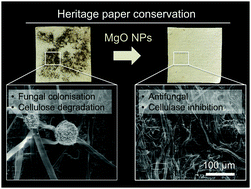
J. Mater. Chem. B, 2019,7, 6412-6419
https://doi.org/10.1039/C9TB00992B
Influence of chemical heterogeneity and microstructure on the corrosion resistance of biodegradable WE43 magnesium alloys
Future biodegradable Mg implants can be designed with enhanced corrosion resistance using microstructure control.
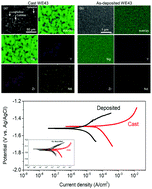
J. Mater. Chem. B, 2019,7, 6399-6411
https://doi.org/10.1039/C9TB00388F
Oily core/amphiphilic polymer shell nanocapsules change the intracellular fate of doxorubicin in breast cancer cells
The aim of this work was to develop and test the in vitro biological activity of nanocapsules loaded with a doxorubicin (DOX) free base dissolved in a core of castor oil shelled by poly(methyl vinyl ether-co-maleic anhydride) conjugated to n-octadecylamine residues.
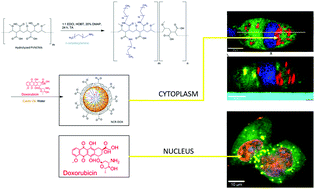
J. Mater. Chem. B, 2019,7, 6390-6398
https://doi.org/10.1039/C9TB00587K
An immunochromatographic strip sensor for sildenafil and its analogues
A novel Sild hapten was successfully synthesized and a sensitive anti-Sild mAb was produced based on this hapten. The immunochromatographic assay (ICA) allowed qualitative and quantitative detection of Sild and its analogues in food samples within 15 min. The ICA was successfully applied to real samples and showed a good correlation with ic-ELISA.

J. Mater. Chem. B, 2019,7, 6383-6389
https://doi.org/10.1039/C9TB00280D
About this collection
Journal of Materials Chemistry B is proud to present this themed issue highlighting 2019’s rising stars of materials chemistry research. This issue gathers the very best work from materials chemists in the early stages of their independent career.
Each contributor was recommended by experts in their fields as carrying out work with the potential to influence future directions in materials chemistry. Congratulations to all of those who feature on their important work so far in the field of materials for biology and medicine.